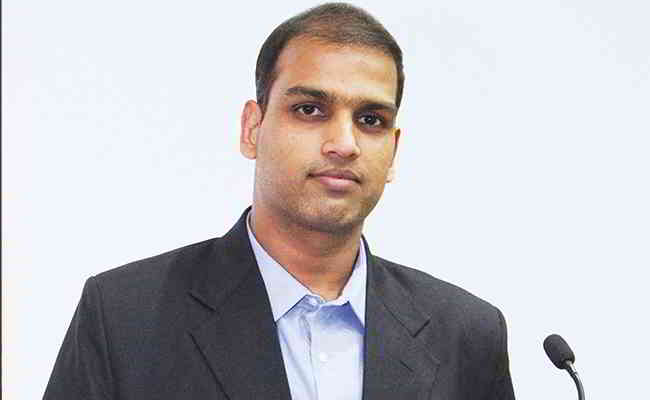Authored By: Sourabh Tiwari, CIO, Meril Group of Companies
Healthcare industry has been faced with a flood of challenges over the past several years. These challenges run the gambit of cost reduction, regulatory and legislative mandates, security attacks, and process changes resulting from new technology.
IT Challenges in healthcare:
- Use of technology to improve overall network performance
- Transformation of the business to align with the Consumerization of Medicine
- More & More Data Sources are Emerging & managing strategies
- Leveraging of technology to ensure a competitive advantage
- Federal Privacy requirements change
- Eliminating network blind spots resulting from mergers and acquisitions
- More mobility, more problems
- IT cost going up
- Minimizing security breaches, reduce cyber theft, and increase patient privacy
IT Threats in healthcare:
Consumerization and the need to be competitive are key drivers for the healthcare industry. Cloud networks, IoT, BYOD, telemedicine, and other new technologies are driving change in the healthcare system.
Consumer Mobility: A big area of interest for healthcare institutions is the consumerization trend in which information is being collected and made available to mobile and web-based devices. For instance, hospitals are now embracing bring your own device (BYOD) for healthcare professionals and support the use of patient accessible Wi-Fi. Instant communication is necessary to ensure quality care for patients, which makes network accessibility incredibly important. The downside is that all of these devices contain operating systems that are vulnerable to hacking and infection, leaving the hospital’s network largely exposed.
Consumer Error: User errors pose other security threats for healthcare systems. When a patient accesses medical records through a portal, their private information is in their hands. Once they store files in unprotected folders on their computer or email results to family, they create an easy way in for hackers and infections.
Network Blind Spots: Company mergers and acquisitions (M&A’s) between hospitals and clinics is also creating network integration issues. Blind spots are areas where IT does not have complete visibility into what is happening on the network or how applications are behaving. Mergers between IT systems for any organization, especially healthcare systems, take time.
Security: Emerging new technologies have also created new security risks. Specifically, security breaches resulting in the theft of personally identifiable information (PII) are expanding. In addition, hospitals and clinics are targeted by hacking, ransomware. But the problems for healthcare IT are not just centred on security. The wealth of private and personal information within healthcare systems makes the industry an inherent target for hacking. The files and information they house make them a goldmine for determined hackers. Weak security systems can leave an entire hospital system very vulnerable.
IT Solutions in healthcare:
So, how does IT overcome these challenges? How well individual IT organizations can leverage these technology changes will ultimately determine their success.
Patient’s in-hand control: Technology give patient’s better access to knowledge and advice, but it also puts more power in their own hands. There is a growing trend of different IT applications that pull patients further into the medical process. Through computer technology, they can be provided resources to learn more about their condition, opportunities to take more involvement in the treatment decisions, and tools for optimizing their health.
Productive Team: Technology is often looked to for the possibility to create a more efficient, productive workforce, and in this area, healthcare IT doesn’t disappoint. For example, mobile devices are becoming powerful tools in the hands of hospital staff & doctors these days. They are perfect for constantly communicating with each other on the run around the premises, and there are some great healthcare applications that can be used to easily fill out forms, double-check information, or carry out other admin tasks. Also tap into online resources, like videos and professional articles, to learn more about their field, make medical decisions, or educate clients and patients.
Increased Accessibility: One of the biggest trends in healthcare IT right now is telemedicine. Computers and the internet make it easier than ever for care providers to stay in touch with patients who are at home. This not only limits unnecessary office traffic, minimizing bottlenecks, but it also provides more comfort and convenience for patients.
Network Visibility: Visibility architecture is the first place to start- see what monitoring data is needed, where to collect the data from, and how to pass that data to monitoring and security tools. Visibility architectures typically result in the addition of taps and network packet brokers to capture and filter the monitoring data. Once you do this, you have the data needed to reduce/eliminate many security and performance related issues.This includes visibility into potential network and application problems as a result ability to improve the performance of healthcare networks.
Network Assessments: This includes network security testing, Wi-Fi network testing, and both wireless and wired performance testing. Testing your solutions will help you overcome your challenges. Best practice is to deploy the right technology to replace outdated, manual processes. The best prescription is to deploy test solutions that run automated test cases for either on-demand or scheduled use cases.
Minimal Errors: The right tech planning can greatly reduce instances of medical error, keeping patients safe and protecting your organization from lawsuits.Electronic medical records, for instance, consolidate all a patient’s medical information in one place, whereas in the past they may have had different files with a range of different providers throughout the city or even country. Other technologies that can reduce error include computerized discharge prescriptions, “smart” intravenous devices, automated pharmacies, and bar coding.Improved Security: A lack of planning means that far too much is left up to chance, and one of the areas that take the biggest hit when that happens is data security. Nowhere is data security more important than in the healthcare industry; in fact, the government requires a certain level of responsibility on the part of providers, and if expectations are not met, your practice can be held financially responsible and subjected to heavy fines.




